profile badges



recent achievements

Reviewed My First Game
Submit a game review
Submit a game review

Rated 10 Games
Rate 10 games you have played.
Rate 10 games you have played.

Critic - Level 1
Earn Critic XP to level up by completing Critic Quests!
Earn Critic XP to level up by completing Critic Quests!

Rated 5 Games
Rate 5 games you have played.
Rate 5 games you have played.


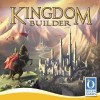
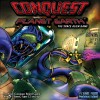
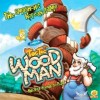












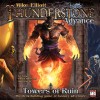




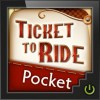



Carcassonne
Carcassonne is a gateway game of tile-laying and worker placement, introducing two fundamental strategies that will make it easier to learn more complex Euro-style games later on in your Hobby development.
That is not to say that this is only a game for beginners, or isn’t a complete game in itself. Much the opposite. For many gamers, including my wife, this is a timeless classic that gets lots of plays, and can be a welcome gaming experience when you don’t feel like learning something new, or want to play with people who are not “gamers” who typically play Euros.
Lets look at the nitty gritty of the game:
Components:
The main game components are a Score Board containing the scoring track,
MANY tiles (which can be added to with expansions),
Wooden tokens shaped like little people (affectionately called Meeple) in each players’ colors (some expansions add new types of tokens).
Setup:
One specific tile is placed in the center of the playing area as the starting position for gameplay. The rest of the tiles are placed upside down and shuffled (or placed into a drawstring bag).
Gameplay:
The sum total of the actual gameplay is as follows: Each player, on their turn, draws a random tile, places it on the growing map, and may, optionally, place one of their Meeple on the tile that they just placed. That is the entirety of the gameplay.
Strategy:
There doesn’t seem to be much to the game by this description, but the strategy comes from the rules for tile placement, and the decisions for placing your Meeples (also with it’s own set of rules) to either score more points, or deny your opponents opportunities to score.
Tile placement rules:
Tiles must be placed so that they
1. must connect to an existing tile on the board.
2. features on the side(s) that connects to other tiles must connect to the same feature on the other tile.
For example: roads must connect to roads, cities to other cities, and fields to other fields. A road cannot end connecting to an emply field, or run into a city at the edge of the tile, a city tile edge cannot connect to a field edge, and so on.
When tiles are placed, their features instantly become part of the features that they connect to: a city on the tile becomes part of the existing city that it connects to, as do roads and fields. They are not separate ones if they connect. If they do not physically connect to existing features, then they are new ones, not connected to the existing features, though they might join up later. Much of the games strategy comes from this.
Worker placement rules:
You may only ever place a worker on the tile that you just placed this turn. You may only place your worker on a feature that is unoccupied by any other meeples of any player including yourself. Once placed, meeple are locked in position until they score. Meeple placed on roads become highwaymen. Meeple placed in cities become guards. Meeple placed in fields become farmers.
Scoring rules:
Highwaymen score when the road they are placed on closes on both sides. Roads close when they connect to anything else, including other different roads at an intersection point on a tile. Roads score one point per road section on each tile. The shortest possible road is two sections.
Guards score when they cities they are in become fully enclosed by walls. Cities score two point per city section on each tile, with some bonus points for “shields” on the city spaces. The smallest possible city is two sections, but only scores two points instead of four.
Farmers score at the end of the game. Any farmer placed in a field is locked until the game is over.
Here’s the catch: Only the majority player in each feature scores the points. If one player has two meeples in a city, but another player has three meeples, then only the second player gets the points when the city closes.
It is especially painful to lose fields in this manner, so always be mindful of farmers, and who is placing them where. One tile can join two fields together, completely changing it’s ownership.
Some expansions change these scoring rules.
Summary:
There is a lot more to Carcassone than first meets the eye. It can be a very light friendly game, suitable for children and family groups, and to introduce Euro games to non-hobbyists. It can also be a brutal cutthroat game suitable for tournaments and hardcore strategists, where the struggle is to lock your opponent’s meeple permanently with as low a score as possible. This is a remarkable accomplishment for such a very simple game. It’s not one of my favorites, but I will gladly play this game, even after over a decade of plays.